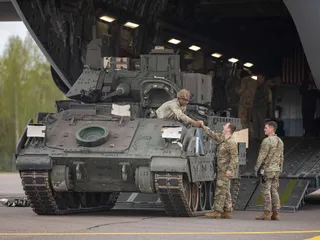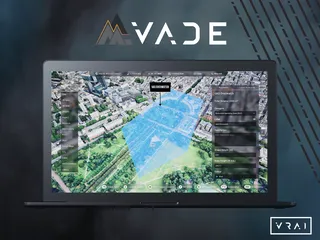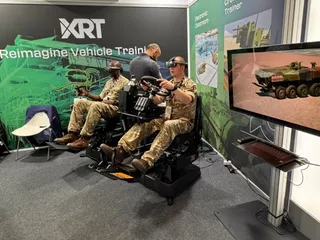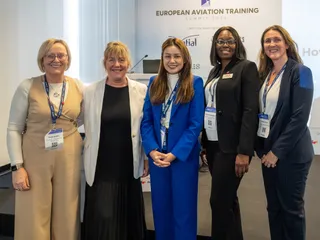Military Vehicle Sector Training Advancements
Contact Our Team
For more information about how Halldale can add value to your marketing and promotional campaigns or to discuss event exhibitor and sponsorship opportunities, contact our team to find out more
The Americas -
holly.foster@halldale.com
Rest of World -
jeremy@halldale.com

This is another in a series of brief articles on simulation and training (S&T) developments in the global military vehicle space.
Two parallel developments are keeping crewed wheeled- and tracked armor vehicles relevant beyond this decade.
Small, cheap, first-person-view and ever-more-lethal new models of drones, and legacy-era weapons including land mines and shoulder-fired missiles have attritted significant numbers of Ukrainian and Russian main battle tanks (MBTs) and other vehicles during the two nations’ war. Yet, agile and adaptive operators on both sides continue to tinker with and enhance their platforms’ protection systems, keeping their MBTs, in particular, relevant and allowing their heavy firepower to continue supporting ground formations.
While discussions gain speed in defense- and wider government circles about the relevance of crewed ground vehicles in future conflicts, especially in Asia Pacific, military departments continue to invest in new and upgraded platforms in this sector.
One representative vehicle, the Abrams MBT, will remain in a number of nations’ orders of battle well beyond this decade. Earlier this year, the US Department of State has approved the Kuwaiti government’s Foreign Military Sale request to procure sustainment support and related equipment for the legacy M1A2 and new M1A2K Abrams main battle tank systems. Last December, Taiwan received its first delivery of 38 American M1A2T Abrams MBTs, with a total of 108 to be sent to the nation by 2026. And last November, the Australian Ministry of Defense announced that its Army received the first delivery of 46 M1A2 SEPv3 Abrams MBTs from General Dynamics Land Systems. These 46 tanks are the initial batch of seventy-five that were ordered in 2022. This acquisition in another key element of the Australian Army’s modernization program LAND 907.
With combatants extending the service life and survivability of armored vehicles, and nations continuing to invest in these platforms, it’s worth a glance to highlight three recent S&T developments intended to elevate the training readiness bar of individuals, crews and formations.
Quick Look of Three S&T Activities
Embedded training remains an instructional design strategy for military services and is rapidly maturing as programs bring to bear technologies for training audiences.
A recent instance of embedded training’s evolution that snared the author’s attention was a summary of its use for US Army crewed vehicle training.
Robert Fortenberry, Strategic Operations Lead at the US Army Synthetic Training Environment (STE-CFT), noted in a LinkedIn posting the efforts of the government-industry team to present the Proof of Concept M2A4 Bradley collective embedded training capability on platform. Positive results of the proof of concept were reported at the Army Maneuver Center of Excellence. Bohemia Interactive Simulations, a BAE Systems company, delivered its VBS4 to support the project development. The M2A4 tracked, armored fighting vehicle, delivered by BAE Systems, entered into service with the Army in 2022.
A second recent S&T development of note was featured in the Australian Defence Department’s press release announcing 16 new M1A2 Australian simulators for the Army’s evolving Abrams MBT program.
New South Wales-based Thomas Global Systems Australia developed the M1A2 Immersive Tactical Trainers (ITTs). The training devices replicate the inside of a main battle tank, and were reported in the 11 September 2025 press release to be “comparable to flight simulators in both sophistication and functionality.” The department document also noted, “The simulators offer flexible training modes – either under the control of an on-board instructor, or through networked scenarios for collective training. The simulators enable procedural gunnery and tactical training, scalable from individual crew training to tank squadron level.” Global Defence Solutions (Alkath Group) was a key Thomas Global Systems partner, as it designed and manufactured 12 x 20-foot 1C ISO container systems for the ITTs.
Data and AI are not the exclusive purview of other military training sectors. KNDS France and VRAI are teaming to use VRAI’s HEAT simulation data solution and ReACT Virtual Reality (VR) Armour Crew simulator, integrated with KNDS simulation products. The two companies expect to provide insights to reduce the time and cost of training armor crews while supporting performance improvements by optimizing data and AI.
On our Watch List
MS&T will continue highlighting S&T activities for the armored vehicle space as major developments are reported.


